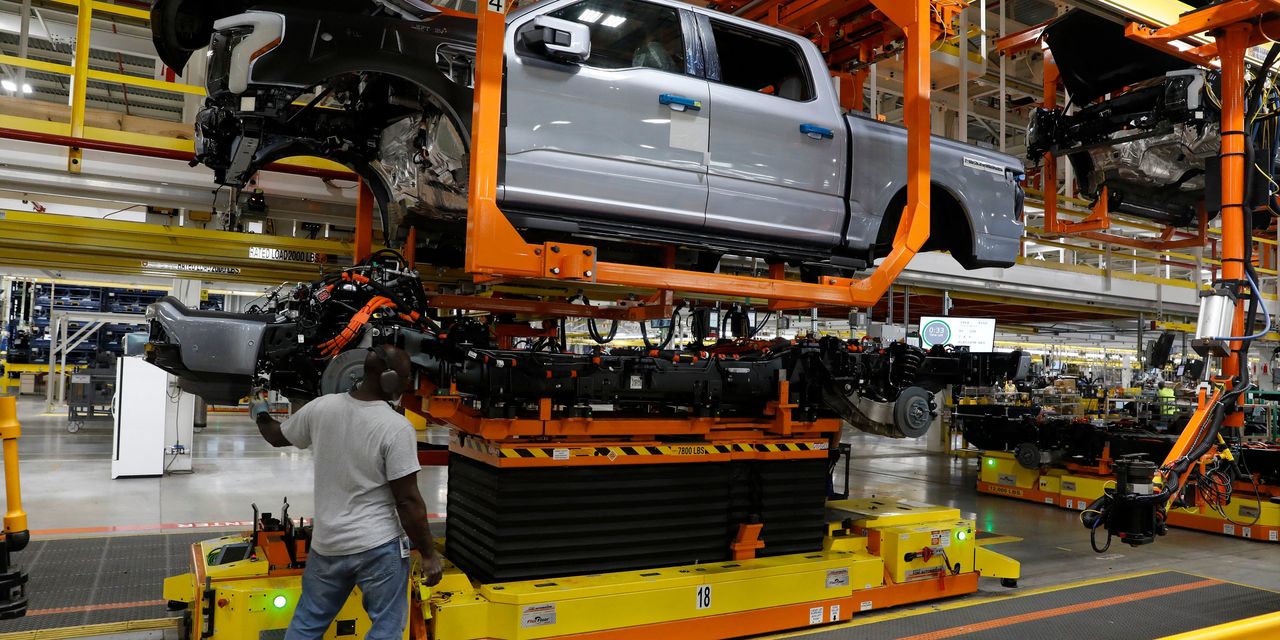A United Auto Workers strike, if one is called, would come at a time when the Big Three U.S. automakers are struggling with the transition to electric vehicles — and Tesla Inc. is emerging as a potential beneficiary of the labor strife.
The UAW and Ford Motor Co.
F,
General Motors Co.
GM,
and Stellantis NV
STLA,
remain far apart ahead of the contract expiration at 11:59 p.m. Eastern time today.
The union plans to launch “stand up” strikes, targeting yet-to-be-determined plants for a walkout at the stroke of midnight if negotiations fail. The UAW also said it won’t extend the current contract.
Tesla
TSLA,
has for years fended off unionizing efforts at its U.S. factories, which has helped it widen the first-mover advantage that it has enjoyed on EVs, and it is likely to emerge as “the winner from the labor talks,” Gene Munster, a managing partner at Deepwater Asset Management, said in a note Thursday.
“Big auto is in a tight place when it comes to transitioning its business to electric, and the current UAW discussions will eventually result in a steep increase in costs that will further push them into the red,” Munster said.
Ford has put forward a 20% increase over the life of the four-year contract, up from its previous offer of 9%, while GM’s latest offer is 18% and Stellantis’s offer is 17.5%. The union is seeking wage increases of around 36% over the life of the contract, after initially seeking 46% when compounded annually.
But even before any wage increases resulting from the potential strike, the Big Three are paying their workers 38% more than comparable Tesla workers, and that gap is likely to increase, Munster said.
Ford, GM and Stellantis also have struggled to make their EVs profitable. Part of the reason GM decided to end the production of its Chevy Bolt was the thin profit margins on the compact EV. GM then decided to bring back the Bolt at a later date using a shared EV architecture in hopes that will improve margins.
Moody’s Investors Service also pointed out that EV dilemma. While all three automakers have ample liquidity to weather a strike, a prolonged labor action could slow down their EV ambitions, the debt-rating agency said in a recent note.
While workers are unlikely to get as big a raise as they are demanding, the new UAW contract could result in pay increases of as much as 20%, Moody’s said.
A strike could also affect automakers’ plans to ramp up EV production, Moody’s said. GM, for instance, plans to make about 100,000 EVs in the second half of the year, double the number it made in the first half.
See also: UAW strike could affect auto-parts companies Lear, Magna the most: CFRA
“Critically, the strike could affect production of electric models that General Motors launched in the last 18 months, very few of which were actually built so far,” Moody’s said.
Ford, for its part, is targeting an annualized production run rate by the end of the fourth quarter of 100,000 F-150 Lightnings, the electric version of its popular F-150 pickup truck, compared with 24,000 in the first quarter, it said.
Don’t miss: UAW strike: These Ford, GM plants are the most likely targets
Read the full article here










Leave a Reply